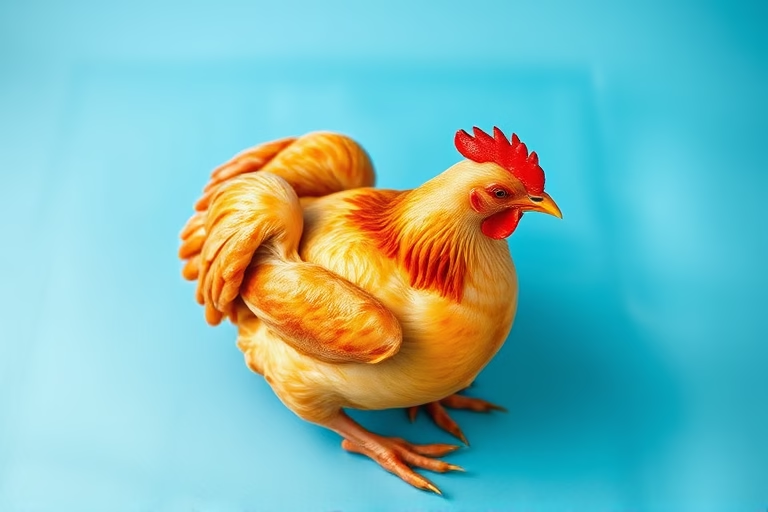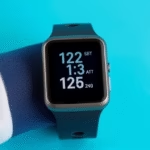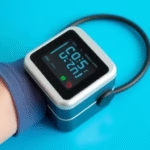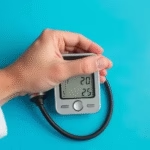In this article, we will be discussing whether boiled chicken is good for high blood pressure. High blood pressure, or hypertension, is a common condition that affects millions around the world. It often requires dietary adjustments in order to manage it effectively. Foods that are low in sodium and high in nutrients are typically recommended to help reduce blood pressure. Among these foods, chicken—specifically boiled chicken—can play a significant role. Boiling chicken helps to lower fat content and can eliminate harmful substances that may exacerbate hypertension. Additionally, chicken is a great source of lean protein, which is essential for maintaining muscle mass and overall health. This piece will explore all aspects of boiled chicken and its effects on high blood pressure, aiming to provide insightful and actionable advice for those who are striving to manage this condition.
What is Boiled Chicken?
Boiled chicken is simply chicken that has been cooked in boiling water or broth until fully cooked. This method is considered a healthy cooking option as it often doesn’t require any added fats or oils, making it a lean protein source. Chicken is an excellent source of protein, vitamins, and minerals, which are beneficial for maintaining overall health. When boiled, chicken retains most of its nutrients while removing excess fats and cholesterol. This makes it a suitable option for individuals who need to monitor their heart health, particularly those with high blood pressure.
Benefits of Boiled Chicken for High Blood Pressure
Eating boiled chicken can contribute positively to heart health due to several factors. Firstly, it is low in saturated fat, which can help maintain healthy cholesterol levels. High cholesterol can be a risk factor for developing hypertension. Secondly, protein from chicken is essential for maintaining muscle health. Muscle mass is important for metabolic rate and overall body functioning, and having a balanced diet with adequate protein can help keep weight in check—another crucial aspect of managing high blood pressure. Furthermore, boiled chicken is often paired with vegetables, which adds more essential nutrients and fiber to the meal. A fiber-rich diet supports healthy digestion and can also help lower blood pressure levels.
Low Sodium Content of Boiled Chicken
One of the most critical aspects of managing high blood pressure is maintaining a low sodium intake. Boiling chicken without added salt keeps the sodium levels low. Sodium can cause the body to retain water, which increases blood volume and, consequently, blood pressure. Opting for boiled chicken allows you to control the sodium levels in your diet, making it a smart choice for hypertension sufferers. Additionally, seasoning boiled chicken with herbs and spices instead of salt can enhance flavor while keeping dishes heart-healthy.
High Protein Content and Muscle Health
Chicken is known for its high protein content, which is vital for building and repairing body tissues. For individuals with high blood pressure, maintaining a healthy weight is essential to manage their condition. Protein-rich foods like boiled chicken can aid in curbing hunger. Including boiled chicken in meals can promote a feeling of satiety, helping to prevent overeating. Moreover, protein contributes to muscle health, which helps with weight management. The more muscle a person has, the more calories they burn at rest. Therefore, eating boiled chicken can help build lean muscle while also managing blood pressure levels.
Nutritional Value of Boiled Chicken
Boiled chicken is packed with essential vitamins and minerals that contribute to overall health. It is rich in B vitamins—particularly B6 and B12—both of which play roles in energy production and the formation of red blood cells. These vitamins also support the immune system and brain health. Other vitamins such as niacin and riboflavin are required for maintaining good health and preventing fatigue. Furthermore, boiled chicken is a good source of phosphorus and selenium—minerals that play fundamental roles in bone health and immune function. Consuming a nutrient-rich diet is crucial for individuals with high blood pressure.
How to Incorporate Boiled Chicken into Your Diet
Incorporating boiled chicken into your diet can be easy and delicious. It can be added to salads, stir-fries, soups, and wraps. One simple recipe is a chicken salad, where boiled chicken is mixed with leafy greens, colorful vegetables, and a light vinaigrette. Additionally, it can be shredded and used as a topping on whole-grain pizzas or in grain bowls. For a filling meal, combine boiled chicken with brown rice and steamed vegetables. The versatility of boiled chicken allows for a range of meal options that can benefit those with high blood pressure without sacrificing taste.
Potential Risks of Eating Chicken
Despite the numerous benefits of eating boiled chicken, there are potential risks to consider. It’s essential to ensure that chicken is sourced from reputable suppliers and cooked thoroughly to avoid foodborne illnesses. Improperly handled chicken can carry harmful bacteria such as Salmonella and Campylobacter. Additionally, overconsumption of any protein source can lead to an imbalance in nutrient intake. It’s vital to maintain a well-rounded diet that includes various protein sources, fruits, vegetables, and whole grains to ensure that nutritional needs are met.
Vegetarian Alternatives to Boiled Chicken
For those who choose vegetarian options or who are looking to diversify their diets, there are many alternatives to boiled chicken that can provide similar health benefits. Plant-based proteins such as lentils, beans, chickpeas, and tofu can offer significant health benefits. They are low in fat and high in protein, fiber, and essential nutrients. Incorporating these alternatives can help in maintaining a balanced diet that supports heart health while managing blood pressure. Each alternative has its unique flavors, textures, and cooking methods that allow for a variety of meal options.
Conclusion: Is Boiled Chicken Good for High Blood Pressure?
In summary, boiled chicken can be a beneficial addition to the diet of individuals with high blood pressure. Its low sodium, high protein content, and rich nutritional value make it a heart-healthy food choice. When properly prepared and consumed in moderation, boiled chicken provides essential nutrients while supporting weight management and muscle health—key aspects of maintaining stable blood pressure levels. It is important to pair it with a variety of vegetables and whole grains to further enhance its health benefits.
For those looking to manage high blood pressure, incorporating boiled chicken can lead to healthier meal options, provided that it is part of a balanced diet. It is critical to exercise caution when handling and cooking chicken to mitigate any food safety risks. Paying attention to overall dietary habits and lifestyle choices is crucial in managing hypertension effectively. A holistic approach that includes regular physical activity, stress management, and healthy eating patterns can work wonders in controlling blood pressure levels.
Frequently Asked Questions
1. Is boiled chicken low in sodium?
Yes, boiled chicken can be low in sodium especially if prepared without added salt, making it suitable for individuals with high blood pressure.
2. How does boiled chicken help manage weight?
Boiled chicken is a high-protein food that can promote satiety, helping to curb hunger and reduce overall caloric intake, which is beneficial for weight management.
3. Can I eat boiled chicken every day?
Yes, as long as it is part of a varied and balanced diet, eating boiled chicken daily can be healthy. However, incorporating different protein sources is important for a well-rounded diet.
4. What should I eat with boiled chicken to manage blood pressure effectively?
Pairing boiled chicken with a variety of vegetables, whole grains, and healthy fats can enhance nutrients and support heart health.
5. Are there any risks associated with eating boiled chicken?
Potential risks include foodborne illnesses if chicken is not cooked properly. Ensuring food safety and proper handling can mitigate these risks.
Further Reading
What Type of Psychotherapy Is Best for Anxiety?







